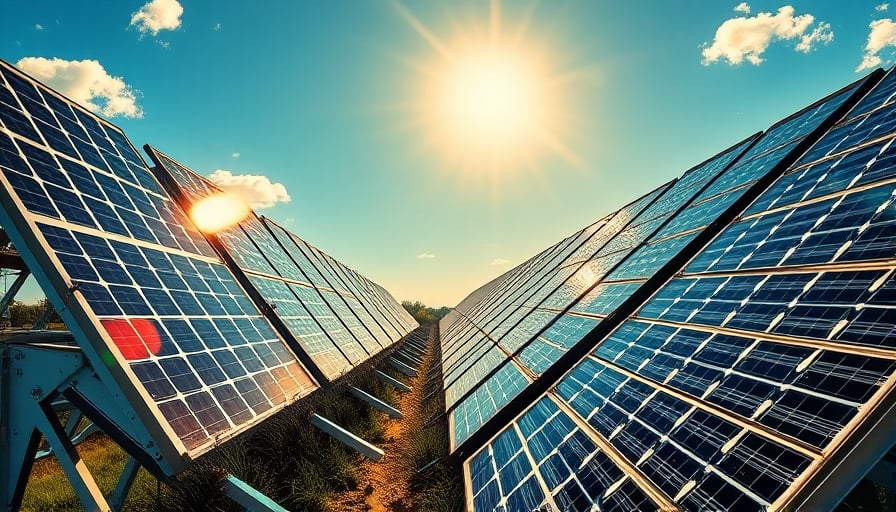Market Context and Strategic Outlook for Sungrow Power Supply Co., Ltd.
Sungrow Power Supply Co., Ltd., headquartered in Hefei, has long been a pivotal player in the global photovoltaic (PV) and energy‑storage market. Its product portfolio—ranging from central and string PV inverters to a broad array of battery storage solutions (e.g., SH5K‑20, SC500KU) and ancillary services such as SolarInfo monitoring systems—serves large‑scale utility PV, commercial and residential solar, as well as wind‑farm projects. The company’s market capitalization of approximately 338 billion CNY and a trailing‑price‑to‑earnings ratio of 24.45 position it as a mid‑cap leader within the electrical‑equipment sector.
1. Immediate Market Developments
On 17 October 2025, the Shenzhen Stock Exchange recorded a modest decline in the main indices: the Hang Seng China Enterprises Index fell 1 %, the Shenzhen Composite dropped 1.99 %, and the ChiNext index slipped 2.37 %. Defensive sectors—particularly coal, gas, and utilities—outperformed, reflecting a broader market preference for assets perceived as less cyclical during a period of tightening liquidity. Conversely, the renewable‑energy sub‑sector, encompassing wind and solar, suffered a sharp retreat, with the latter registering the most significant percentage drop among all energy themes.
While the news stream does not explicitly mention Sungrow, the decline in solar‑related stocks and ETFs (e.g., Yangguang Power falling more than 8 %) indicates a short‑term corrective phase in the PV sector. This environment can exert downward pressure on revenue forecasts for firms directly tied to solar installations, including Sungrow.
2. Revenue and Earnings Context
Sungrow’s 2025 trading data reveal a closing price of 163 CNY on 15 October, within a 52‑week range of 52.98 to 169.8 CNY. The stock’s valuation at roughly 24.45 × P/E suggests that investors are pricing in modest growth expectations, likely reflecting the broader market’s cautious stance toward renewables amid policy uncertainties and supply‑chain constraints.
Given Sungrow’s diversified product mix—ranging from inverter systems to advanced battery management—the company is well‑positioned to mitigate volatility that might affect any single segment. Its exposure to utility‑scale projects, which typically feature longer procurement cycles and larger order values, could provide a stabilizing cushion against short‑term market swings.
3. Strategic Implications
Supply‑Chain Resilience: Sungrow’s extensive product catalogue and global footprint enable it to adjust rapidly to changing demand profiles. In periods of solar‑sector softness, the company can lean more heavily on its energy‑storage and wind‑turbine offerings, which have historically shown steadier demand in China’s grid‑integration initiatives.
Policy Landscape: The Chinese government’s continued emphasis on renewable energy—particularly grid‑scale storage and offshore wind—aligns with Sungrow’s core competencies. Anticipated regulatory incentives for grid‑ready storage systems may offset any temporary dip in PV inverter sales.
Competitive Positioning: While rivals such as Yangguang Power experienced pronounced intra‑day sell‑off, Sungrow’s broader service ecosystem (e.g., SolarInfo monitoring and iSolar Cloud) differentiates it from pure inverter manufacturers, potentially preserving market share during downturns.
4. Forward‑Looking Assessment
The current market correction in solar‑related equities should be viewed as a cyclical adjustment rather than a structural shift. Sungrow’s diversified portfolio, combined with its substantial market cap and robust earnings profile, positions it to navigate short‑term headwinds. The firm’s continued investment in battery technology and smart‑grid solutions aligns with long‑term industry trends toward decarbonization and grid modernization.
Investors should monitor the trajectory of renewable‑energy policy in China, particularly any new mandates for grid‑ready storage or offshore wind, as these are likely to provide growth catalysts for Sungrow. Meanwhile, the stock’s current valuation reflects a reasonable premium for its strategic assets and should be considered in light of broader market sentiment toward defensive and utility‑focused equities.
